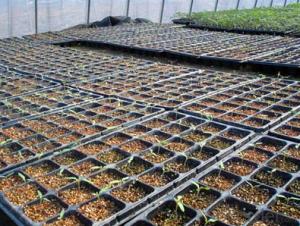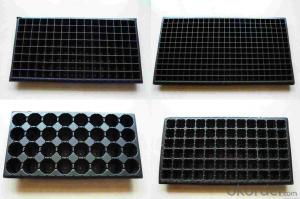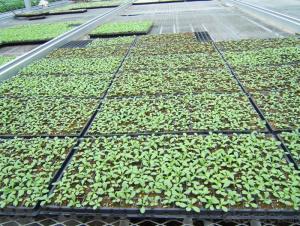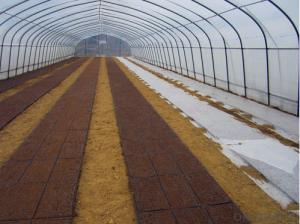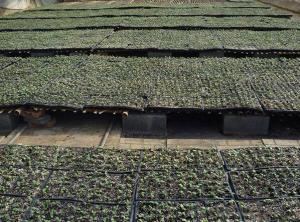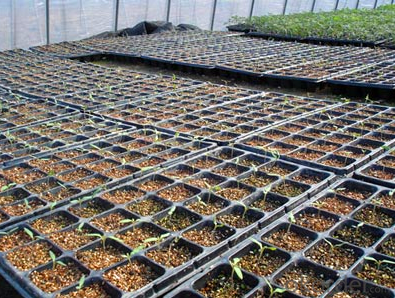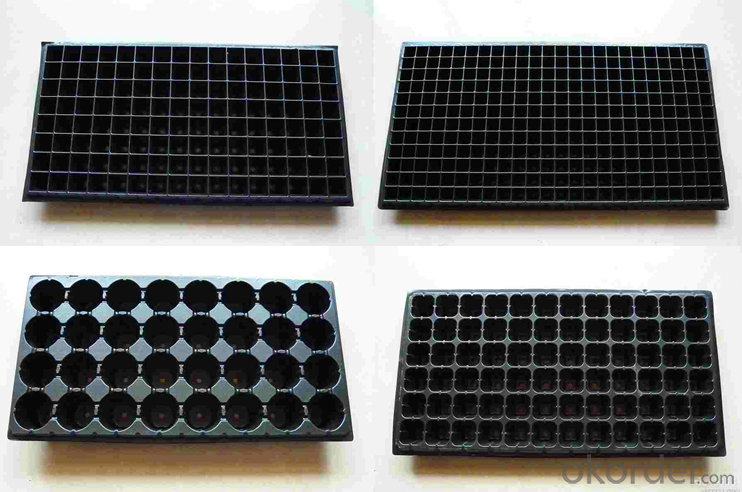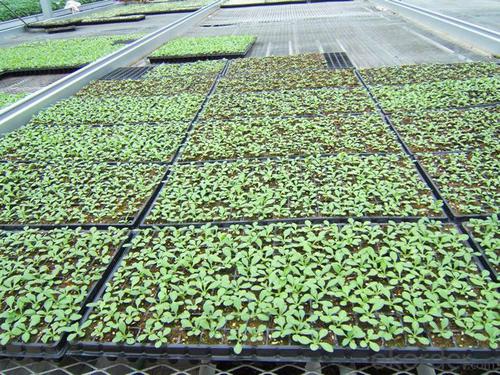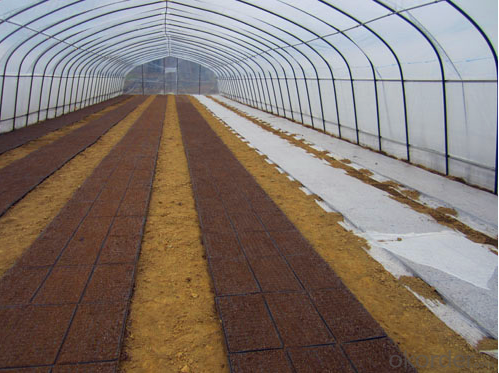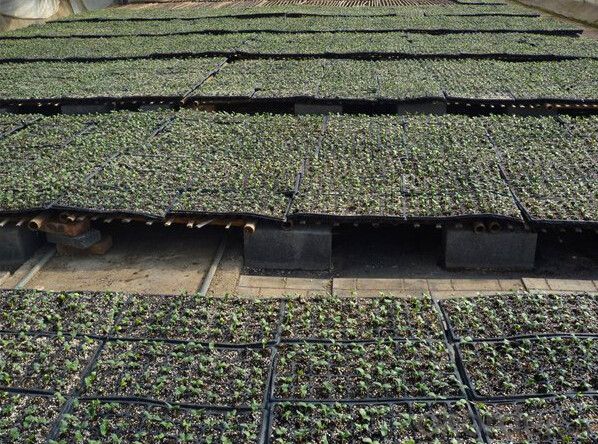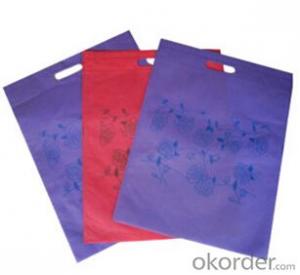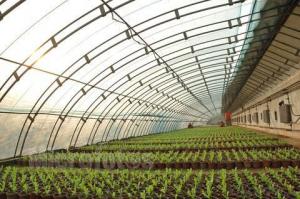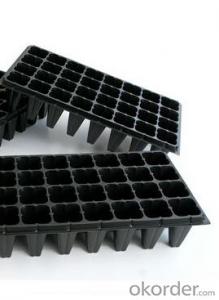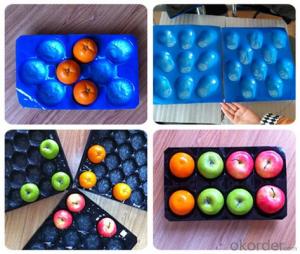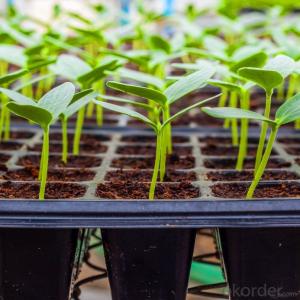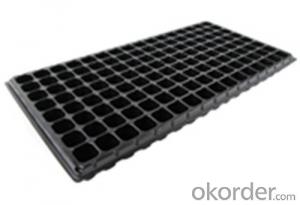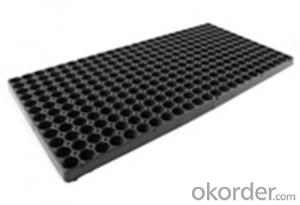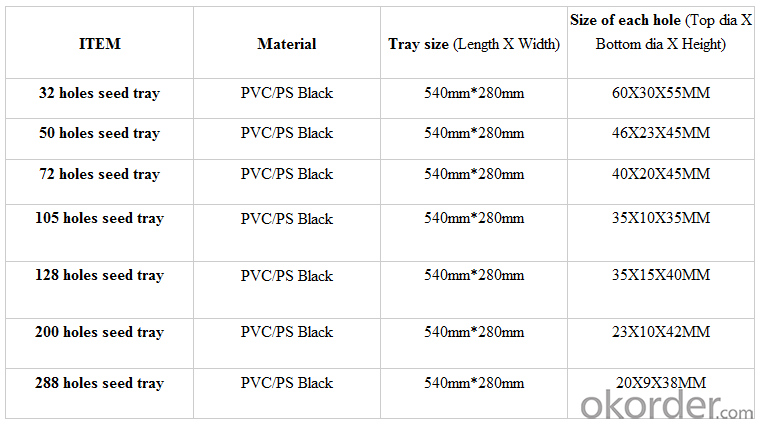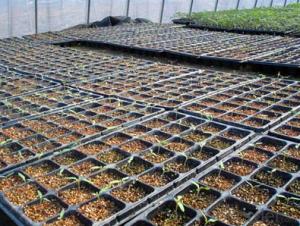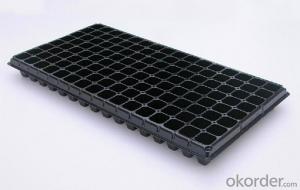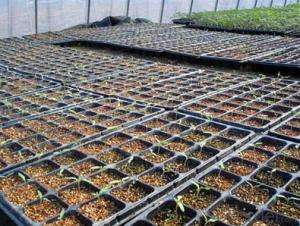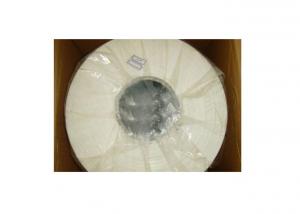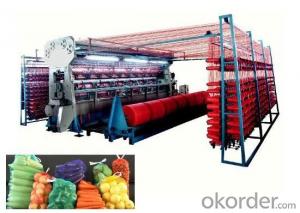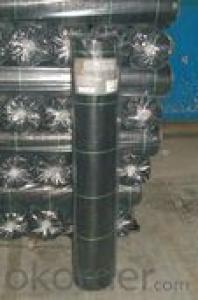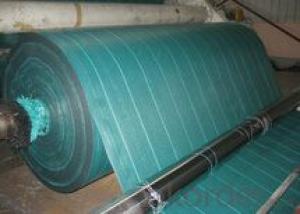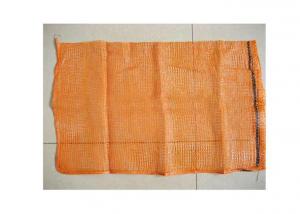162 Cells PS Seedling Tray,Seed Tray,Plug Tray
- Loading Port:
- China main port
- Payment Terms:
- TT OR LC
- Min Order Qty:
- 2000 pc
- Supply Capability:
- 2000000 pc/month
OKorder Service Pledge
OKorder Financial Service
You Might Also Like
Brief Introduction to CNBM:
CNBM International Corporation (CNBM International) is the most important trading platform of CNBM Group Corporation, a state-owned company under the direct supervision of State-owned Assets Supervision and Administration Commission of the State Council.
CNBM International is highly recognized by its business partners and clients all over the world and has obtained rapid development under the spirit of win-win. We will carry on the mutual beneficial, innovative and revolutionary trading structure as we did before, create value for our employees, share holders and clients and benefit the whole society in our future development.
Features:
Material: HIPS
Thickness: 0.5mm-1.5mm, Standard:1mm
Weight: 80g(±5)g-230g(±5)g, Standard weight:155g(±5)g
Size: length:490mm-540mm, width:190mm-345mm,depth:25mm-150mm
Standard:540mmX280mm
Cell count: 18-512
Package: In Carton
Warrenty: 8-10 times
Picture:
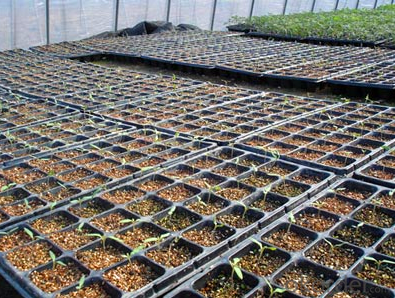


Specification:
FAQ:
Q:1.How many times can the seed tray be used?
A: Under the same environment, it is decided by the thickness. Usually 0.6mm thickness can be used for 1 or 2 times.
1.0 thickness can be used for 3-4 times. 1.5 thickness can be used for 8-10 times.
Q: 2.How long is the production time?
A: Usually one to two weeks.
Q: 3.How is the seed tray being packaged?
A: They can be packaged in carton or pallets. Carton size is 55cm*29cm*50cm.
- Q: Are nursery trays suitable for aquaponics?
- Yes, nursery trays can be suitable for aquaponics. Nursery trays are typically used for raising and cultivating seedlings, and they can also be utilized for starting and growing plants in an aquaponics system. The trays provide a convenient and organized way to manage the plants, and their design allows for efficient water circulation and nutrient absorption. However, it is important to ensure that the trays do not contain any harmful chemicals or toxins that could negatively impact the fish or the overall aquaponics system.
- Q: What's the best way to repair plastic products?
- Plastic products, agricultural films, raincoats and other relatively thin and soft, torn or cracks, the breach of good alignment, covered with a piece of glass paper, hot iron or iron in the crack under the pressure, can stick well. If the plastic cloth hole, can take a slightly larger than the hole of the plastic cloth over the top, with the same way of sticking.
- Q: I'd really like to be a plastic surgeon but im confused on what courses i should take for grade 11.. what are some good universities? attaching websites would be helpful as well. how long does it take to be a plastic surgeon
- The general process: 4 years college 4 years medical school 6-8 years plastic surgery residency (or general surgery residency + plastics fellowship) Plastic surgery and dermatology are the two most competitive medical residencies to get. You'll need to excel at the undergraduate and then medical school levels to have any sort of chance. What you should aim for: 1. EXCEL in high school and get into an Ivy or similarly top-ranked college (including excellent publics like UMich, UC Berkeley, etc). This is so you can... 2. EXCEL in college. The highest ranked schools will offer you connections and opportunities that no-name schools cannot. to a lot of medical school admissions officers, a good name is a boost. This is so you can... 3. Attend and excel at a top-ranked medical school. Important, because academic medicine is extremely insular and name matters. Do extensive plastic surgery research in undergrad and medical school... honor your rotations... and schmooze the hell out of your plastics department. 4. Apply in plastics and hope for the best. There isn't much you can do in 11th grade to advance this process. I recommend: 1. Being at the top of your class, taking the most rigorous courseload available 2. Learning Spanish - depending on where you attend medical school or practice someday, this will make things easier for you as well as open up new markets. 3. Shadowing a plastic surgeon. 4. if you are near an academic medical center - volunteering as a research assistant in a plastic surgery lab, or regular surgery research if plastics is unavailable. 5. Doing some interesting and social activities including sports, music, travel, etc. Having skills and talents will help distinguish you from other applicants, and will also give you added opportunities to socialize and network with people in your field. 6. Developing presentation and public speaking skills. Very important in medicine.
- Q: Are agricultural plastic products resistant to UV degradation?
- Yes, agricultural plastic products are generally designed to be resistant to UV degradation. They are manufactured with additives that provide UV stabilization, ensuring their durability and longevity in outdoor agricultural settings.
- Q: Right now I feel like if I want to be a plastic surgeon. When I tell people they kind of freak out, whta should I say to them?
- Plastic Surgeons are very important. Not necessarily the ones that do the boob or nose jobs, but the ones that re-construct. Educate the people who react like that. Tell them the actual job for plastic surgeons and why they do their job. Some people think the person wants to be a plastic surgeon because they want to get a peak at their patients bodies if you know what I mean. But that's [hopefully] not true. Clear that fact. The boob/nose job surgeons have patients who normally want a change in themselves to boost their confidence. Thus the surgeons help change their lifestyle for the better. To make them feel better! [isn't that part of a doctor's job?] The reconstructive surgeons are the ones that save lives. Sometimes people come in with crushed [literally] faces/bodies. If there were no plastic surgeons then who would fix those? Would the patient have a crushed face or body forever? Sometimes those injuries can be fatal--thus Plastic Surgeons also save lives.... Another good example of what plastic surgeons do [that is very respectable] is when a patient undergoes surgery, complications sometimes arise. In that case one complication could be infection. When that happens, sometimes patients have to be kept open - which results in a necessity for excess skin to cover - Plastic Surgeons are the ones who fix that... So tell who ever freaks out that Plastic Surgeons are respectable, they went through med school - and are like any other doctor in any other field...
- Q: Are nursery trays suitable for greenhouse use?
- Yes, nursery trays are suitable for greenhouse use. They are designed to provide a controlled and optimal environment for seed starting and plant propagation. The trays help to organize and protect young plants while also allowing for efficient irrigation and drainage.
- Q: How do you choose a ground cover that is rabbit-resistant?
- When choosing a ground cover that is rabbit-resistant, it is important to consider a few factors. Firstly, opt for plants that are known to be less appealing to rabbits, such as plants with strong scents or fuzzy leaves. Examples include lavender, thyme, Russian sage, and lamb's ear. Additionally, selecting plants that are less palatable to rabbits, such as ornamental grasses or plants with tough or prickly foliage, can be effective. It is also worth considering the overall hardiness and adaptability of the ground cover to ensure it thrives in your specific climate and soil conditions. Lastly, consulting with local garden centers or horticulturists can provide valuable insights and recommendations for rabbit-resistant ground covers that suit your specific needs.
- Q: Are nursery trays suitable for ground cover plants?
- Yes, nursery trays are suitable for ground cover plants. They provide a controlled environment for the plants to grow and establish strong root systems before being transplanted into the ground.
- Q: Can ground cover be used to control soil erosion on slopes?
- Yes, ground cover can be used to effectively control soil erosion on slopes. Ground cover, such as grass, shrubs, or other vegetation, helps to stabilize the soil by reducing the impact of rainfall and wind, preventing the runoff of water, and holding the soil in place with their root systems. The roots of ground cover plants also help to bind the soil particles together, adding further protection against erosion. Overall, implementing ground cover on slopes can significantly reduce soil erosion and promote soil conservation.
- Q: Can ground cover plants be used to prevent erosion?
- Yes, ground cover plants can be used to prevent erosion. These plants help stabilize the soil by forming a dense network of roots and foliage, which reduces the impact of rainwater, wind, and other factors that can cause erosion. Additionally, ground cover plants provide a protective layer that helps to retain moisture, regulate temperature, and suppress weed growth, further aiding in erosion prevention.
Send your message to us
162 Cells PS Seedling Tray,Seed Tray,Plug Tray
- Loading Port:
- China main port
- Payment Terms:
- TT OR LC
- Min Order Qty:
- 2000 pc
- Supply Capability:
- 2000000 pc/month
OKorder Service Pledge
OKorder Financial Service
Similar products
Hot products
Hot Searches
Related keywords
